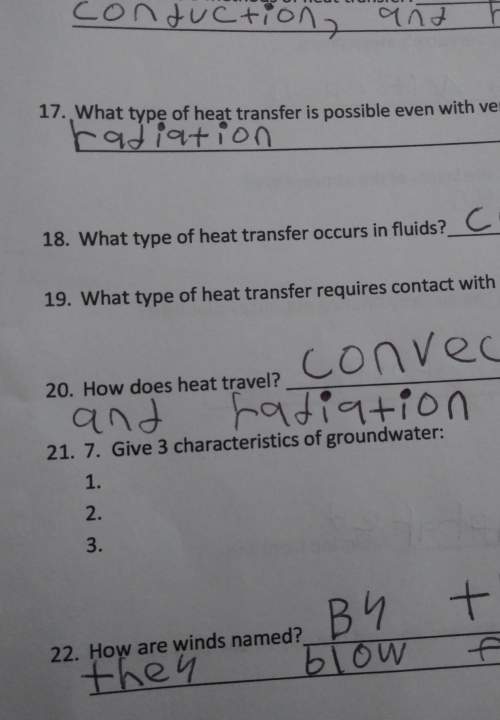
Physics, 11.03.2020 22:08 brittanysanders
The drag on a pitched baseball can be surprisingly large. Suppose a 145 g baseball with a diameter of 7.4 cm has an initial speed of 40.2 m/s (90 mph). Drag coefficient for a pitched baseball equals 0.35.
Part A: What is the magnitude of the ball's acceleration due to the drag force?
Part B: If the ball had this same acceleration during its entire 18.4 m trajectory, what would its final speed be?

Answers: 3


Another question on Physics

Physics, 22.06.2019 05:00
In a stagnant pool of water, a crayfish may spend much of its time lying with one side of its carapace near the surface of the water. in this position, it will move the walking legs on that side in a rhythmic back-and-forth motion. explain the likely function of this behavior.
Answers: 1

Physics, 22.06.2019 17:20
Which is not true of the intertropical convergence zone? a) it features heavy precipitation b) it's where the trade winds collidec) it's a high-pressure zone with sinking air d) it is also known as the doldrums
Answers: 2

Physics, 22.06.2019 21:20
The strong nuclear force acts over a small distance than the electrostatic force. true or false
Answers: 2

Physics, 23.06.2019 00:00
Three resistors are connected in series across a 15-v power supply. if the potential drops across resistors 1 and 2 are 4.1 volts and 3.1 volts, what is the exact potential drop (in volts) across resistor 3?
Answers: 2
You know the right answer?
The drag on a pitched baseball can be surprisingly large. Suppose a 145 g baseball with a diameter o...
Questions

Mathematics, 02.09.2019 00:50


Mathematics, 02.09.2019 00:50

Mathematics, 02.09.2019 00:50


Mathematics, 02.09.2019 00:50


Geography, 02.09.2019 00:50




History, 02.09.2019 00:50



Mathematics, 02.09.2019 00:50

Biology, 02.09.2019 00:50





















